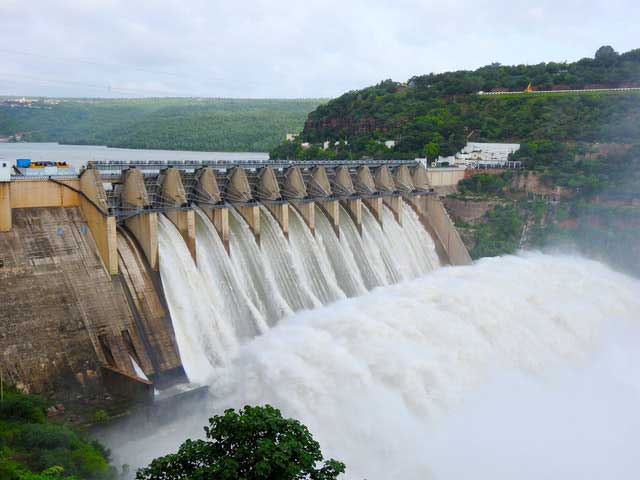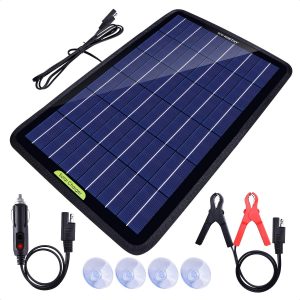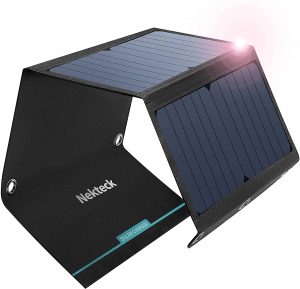Hydroelectric power or hydropower in short is a type of renewable energy that uses kinetic energy resulting from the natural water cycle occurring in the environment every day. This kinetic energy is harnessed for generating electricity and its rate of efficiency is set at around 90%. Since it does not use any burnt fuel, nor does it pollute the air through any direct emissions, hydroelectric energy has been labelled as a clean way of generating electricity.
In 2016, hydropower represented more than 70% of all generated renewable electricity, which accounted for more than 16% of the global generation of renewable as well as hydrocarbon electricity. Norway is a European country that has manages to generate as much as 99% of all of its electrical power using hydroelectric energy.
Other countries worldwide are trying to take its example and increase the use of water damming as a way of harnessing this type of renewable energy. Let us have a closer look at the main advantages of hydropower along with a few of the drawbacks associated with it and find out more about how does hydropower work.
Recommended Reading
How Does Hydropower Work?
With the help of a hydropower plant, the energy from the falling water going downstream is captured and used to generate electricity. Using a turbine, the kinetic energy is turned into mechanical energy. Next, a generator is used to transform the turbine’s mechanical energy into electricity. These dams create and store heads of water that can be used when needed, accordingly.
Hydropower plants come in many different shapes and sizes and they range from micro-hydro plants that can power just a few homes to huge dams such as the Hoover Dam that has the potential of providing electrical power to millions of consumers at a time.
The amount of energy generate by a hydropower plant depends on tow man factors:
- the distance at which the water falls (the taller the dam, the farther the water will fall and the larger amount of energy it will generate)
- the amount of water that falls (bigger rivers have more water falling through the turbines, which will in turn generate larger amounts of energy)
Around 75% of the 45,000 large dams that have been built worldwide are used for flood control, as well as navigation, irrigation, or the need to provide urban areas with the water supplies they need. This means that only the remaining 25% of these dams are utilized to generate hydropower.
The Main Advantages of Hydropower
- Since hydropower uses water as fuel, it is a 100% clean and non-polluting source of fuel that does not rely on any fossil burning processes as opposed to power plants that need to burn coal and natural gas.
- Hydropower is a domestic energy source, which means any country can generate its own energy without having to depend on fuel outside the state borders.
- The energy generated through this procedure fully relies on the natural cycles of the water as generated by the sun. This means hydropower is fully renewable, reliable, and less costly compared to fossil fuel is depleted at fast rates.
- There are hydropower facilities that can rapidly go from generating no power to maximum capacity and power to city grids straight away. This means they are crucial for offering back-up energy during power outage.
- Impoundment hydropower is able to create reservoirs that provide a number of different options for recreation, including swimming, boating, or fishing.
- Large dams are also used for controlling floods, irrigation and navigation needs.
- Pumped-storage hydroelectricity or PSH in short is a means of transforming electrical energy in excess into energy that can be stored. This is done using vertical water pumping protocols and storage ponds and it is used to balance the electric power load on the grid.
Disadvantages of Hydropower
While hydropower does not cause any direct pollution, it does impact the environment in a number of ways. For instance, hydropower facilities can negatively impact the natural habitats and the homes of people who live near a dam.
- The large reservoirs usually cover the homes of residents, as well as a number of natural areas, including land used for agriculture and important archaeological sites. Many local communities as well as indigenous tribes are forced to move out of their homeland for new dam construction reasons.
- The process of building a new dam and water reservoir is a costly and lengthy one.
- Since hydroelectricity depends on the fluctuating level of precipitation, it generates lots of instability.
- There are times when hydroelectricity will trigger certain changes in the quality and temperature of stream and reservoir water. The flow of a river can also be impacted, with repercussions of the fauna and flora in the water as well as on the land nearby.
- Hydroelectricity is also responsible for causing disruptions in the habitats of the surrounding wildlife, triggering big losses and alterations of fish habitats.
- The changing patterns of rainfall patterns and periods with long droughts make predicting the flow of a river in the future a difficult task, often times leading to electrical shortages that can be debilitating.
- Powerful storms that are the result of the accelerated climate change could also make dams less safe than desired, leading to obvious hazards.
Now that you understand the hydropower meaning and the main advantages and disadvantages it comes with, you might also see why it is important to always try to minimize the ecological footprint when building and using new hydroelectric generators.



